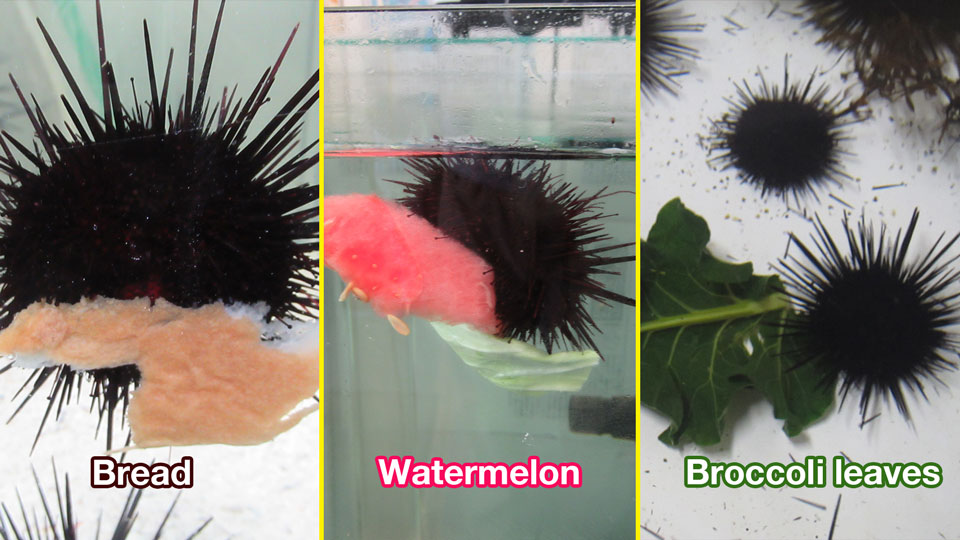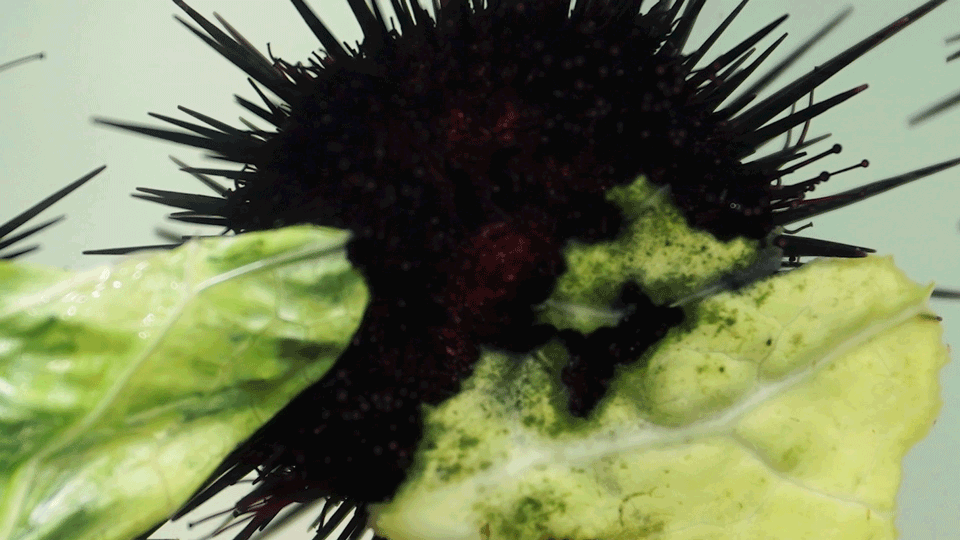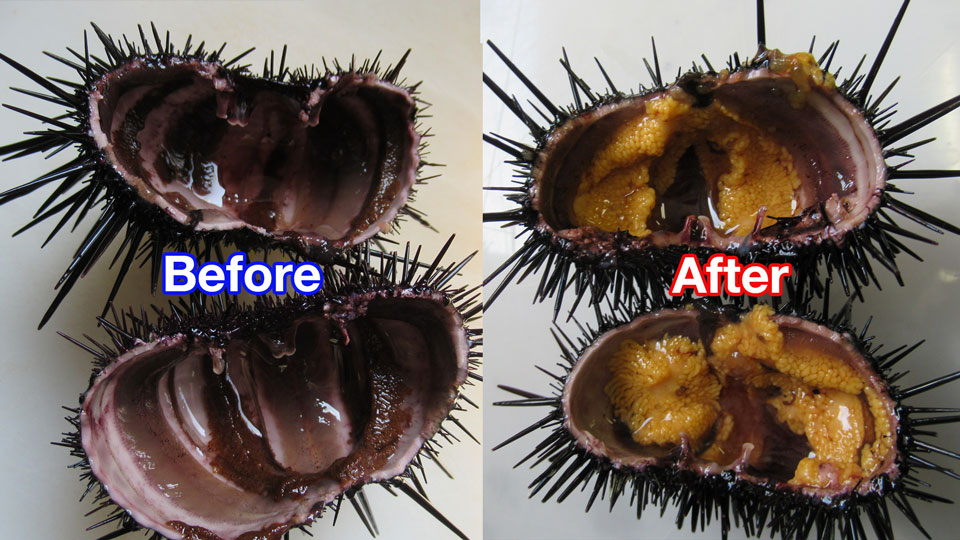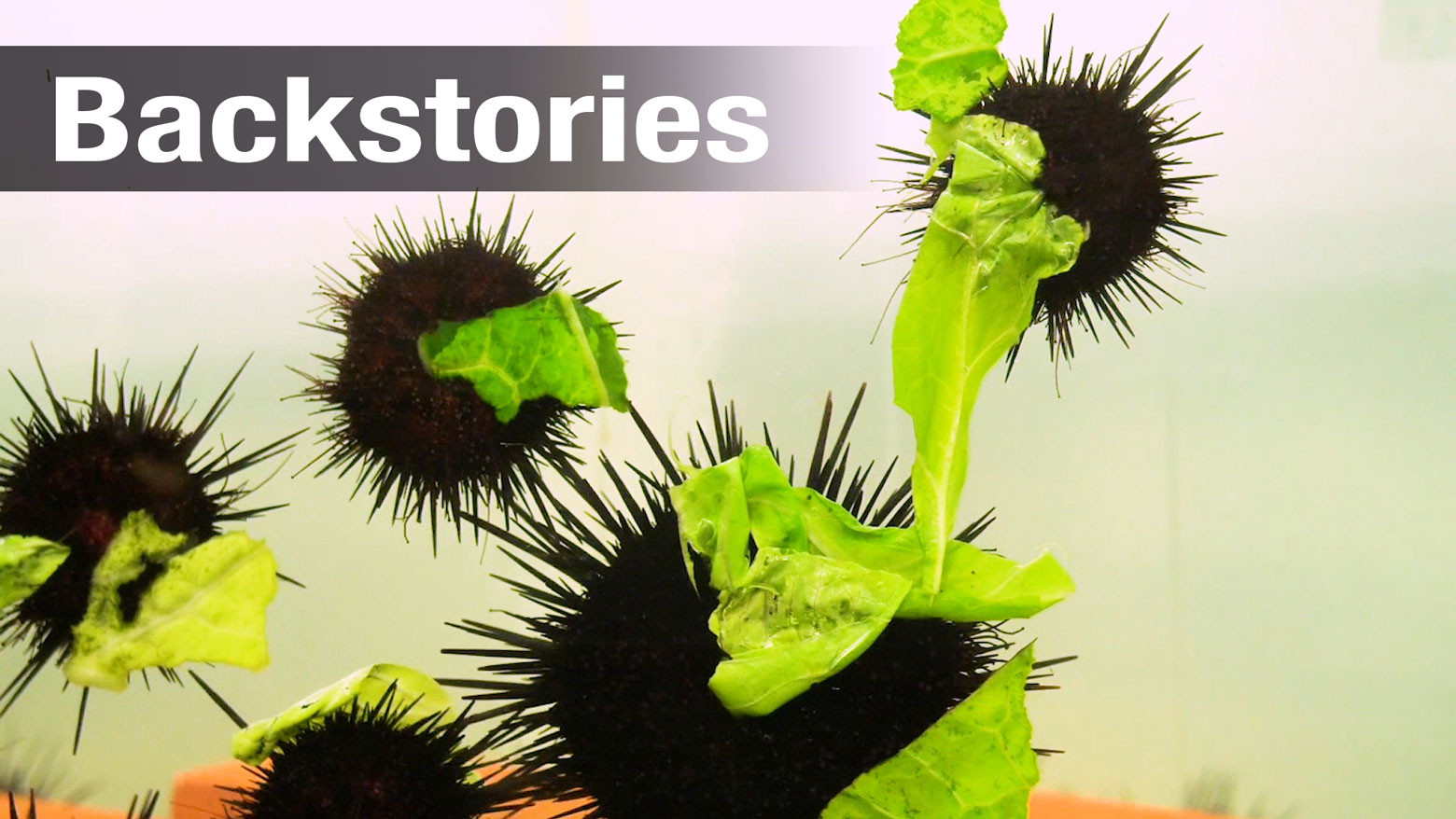Sea urchins multiply rapidly and can quickly lay waste to a marine environment. They are omnivores and leave little behind for other sea creatures, particularly those that rely on seaweed.
Researcher Kazushige Usui of Kanagawa Prefecture's fisheries technology center began studying Japanese purple sea urchins when the local wild population spiked about five years ago.
As the species doesn't have much flesh, he decided to focus on a way to fatten them up to make them commercially viable.
Through trial and error, Usui hit on cabbage, one of the major farm products from the area. He asked local farmers for rejects that would normally be thrown away.

He discovered that cabbage was a big hit with his spiny charges and, three months later, his crop of sea urchins was in much better shape.

"I ate them. They were so good," he says. "It turned out that glycine, a sweet-tasting substance in the flesh, had increased."
"When sea urchins that would otherwise have been eradicated are fed waste cabbage, they become ready for sale quickly," says Usui. "This should be possible anywhere in the world."

Usui's findings have paved the way for urchin farmers not only in Kanagawa, but also around Japan, to dish up local produce. Chinese cabbage is on the menu in Hokkaido and Aomori prefectures, broccoli and tomatoes are going down well in Kyushu, and asparagus is popular in Yamaguchi Prefecture.
And the technique has gotten attention from places such as Singapore, Mexico and the US, where farmers are now feeding their urchins with greens.

